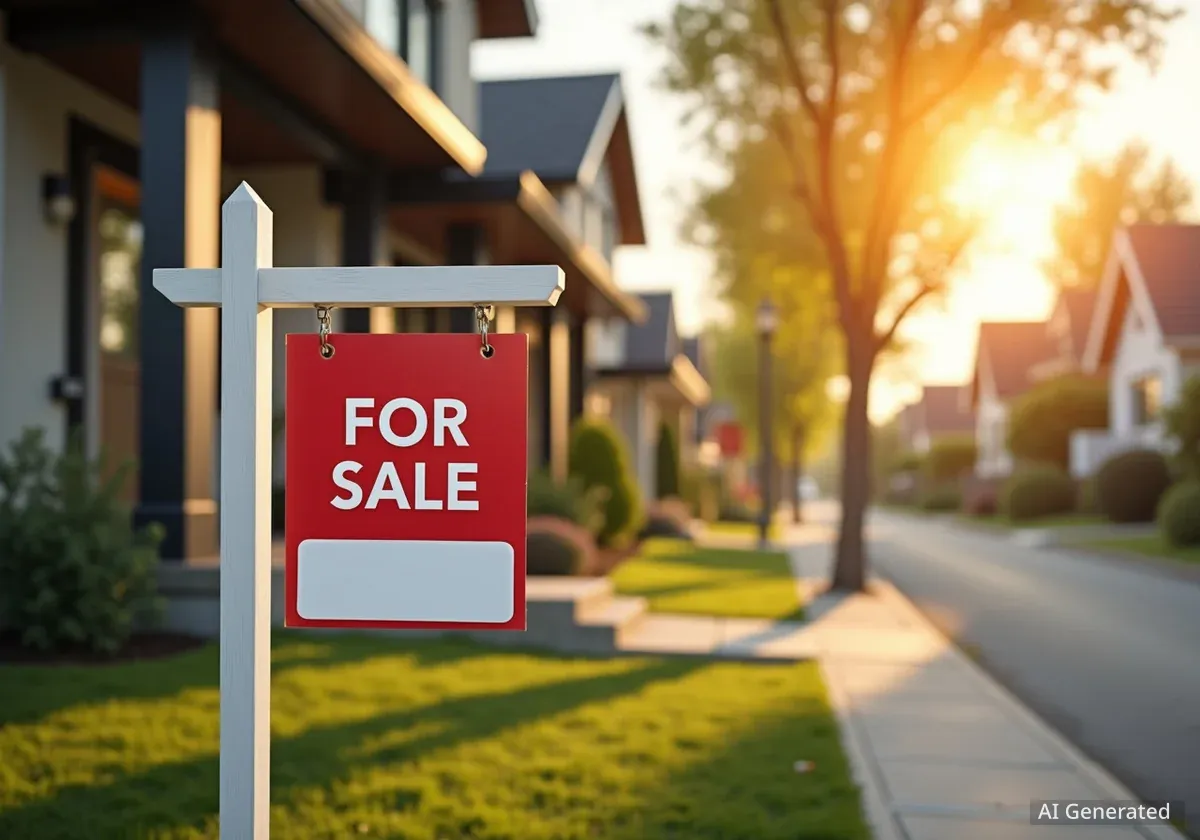Sales of previously owned homes in the United States increased in September, reaching their highest level in seven months. The uptick suggests that a recent dip in mortgage rates may be encouraging some buyers to return to the market, according to new data from the National Association of Realtors.
The report showed a 1.5% increase in sales from August, bringing the seasonally adjusted annual rate to 4.06 million units. This marks a notable shift after a period of slower activity, with sales also climbing 4.1% compared to the same month last year.
Key Takeaways
- Existing home sales rose 1.5% in September from the previous month.
- The median home price reached $415,200, a 2.1% increase year-over-year.
- Housing inventory increased by 14% from a year ago, but the market still favors sellers.
- First-time homebuyers represented 30% of sales, up from 26% last year.
A Cautious Rebound in the Housing Market
The September sales figures, while slightly below analyst expectations, signal a potential turning point for the housing sector. The increase is the first significant monthly gain seen in some time, lifting the market to a pace not observed in over half a year.
This activity is based on closings, which typically reflect contracts signed one to two months prior. This means many of these deals were initiated in July and August, a period when mortgage rates began to ease from their recent peaks.
Regional performance varied across the country. On a monthly basis, the West saw the strongest growth in sales. However, the Midwest was the only region to experience a slight decline. Annually, the Northeast and the South posted the most significant sales increases.
Understanding the Data
The sales figures are seasonally adjusted and annualized, which means they are adjusted for seasonal variations and projected to show what the sales pace would be for an entire year. This method helps in comparing data across different months and years.
The Impact of Easing Mortgage Rates
Experts point to falling mortgage rates as the primary driver behind the renewed buyer interest. According to data from Mortgage News Daily, the average rate on a 30-year fixed mortgage, which was 6.67% at the start of July, has since fallen to 6.17%.
“As anticipated, falling mortgage rates are lifting home sales,” said Lawrence Yun, chief economist for the National Association of Realtors. “Improving housing affordability is also contributing to the increase in sales.”
This relief in borrowing costs, however small, appears to be making a tangible difference for prospective buyers who were previously priced out of the market. The change is particularly notable for first-time homebuyers.
Inventory and Prices Tell a Complicated Story
While more homes are coming onto the market, supply remains tight by historical standards. At the end of September, there were 1.55 million homes available for sale, a 14% increase from the previous year.
This level of inventory represents a 4.6-month supply at the current sales pace. A market balanced between buyers and sellers is typically considered to have a six-month supply, indicating that conditions still favor sellers.
By the Numbers
- Median Home Price: $415,200
- Year-Over-Year Price Gain: 2.1%
- Price Growth Since Pre-Pandemic: 53%
- Consecutive Months of Annual Price Gains: 27
This persistent inventory shortage continues to exert upward pressure on prices. The median price for an existing home in September was $415,200, marking a 2.1% rise from the year before. This is the 27th consecutive month of year-over-year price increases, with home values now 53% higher than they were before the pandemic.
High-End Market Leads the Way
The recovery in sales is not evenly distributed across all price points. The most significant gains were seen in the luxury market, where there is more available inventory.
Sales of homes priced above $1 million jumped by 20% compared to last year. In contrast, sales for homes priced under $100,000 saw a modest increase of just under 3%.
First-Time Buyers and Cash Sales Remain Strong
A positive sign for market health is the return of first-time homebuyers. This group accounted for 30% of all sales in September, a notable increase from 26% during the same period last year. The decline in mortgage rates likely played a crucial role in enabling more new buyers to enter the market.
At the same time, all-cash transactions continue to represent a significant portion of the market, making up 30% of all sales. This indicates that many buyers are still able to sidestep the challenges of high borrowing costs entirely.
Despite the increase in sales, homes are staying on the market slightly longer. The average property was listed for 33 days before going under contract, up from 28 days a year ago. This suggests that while competition is still present, the market is not as frenzied as it was during its peak.





